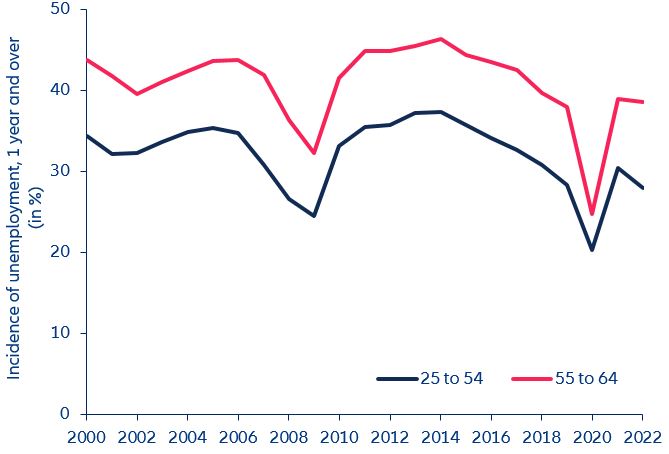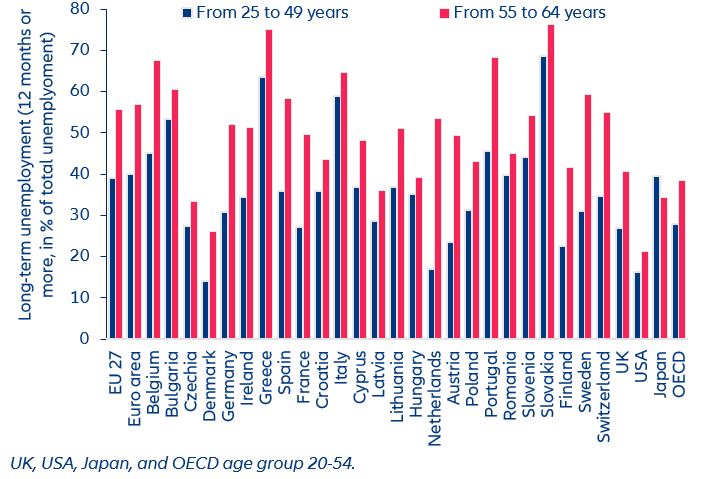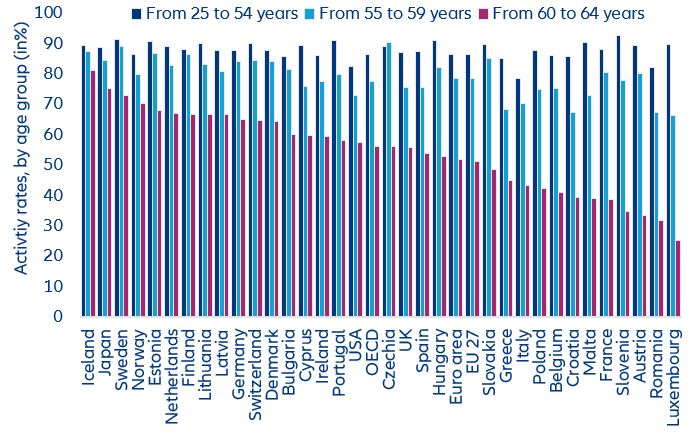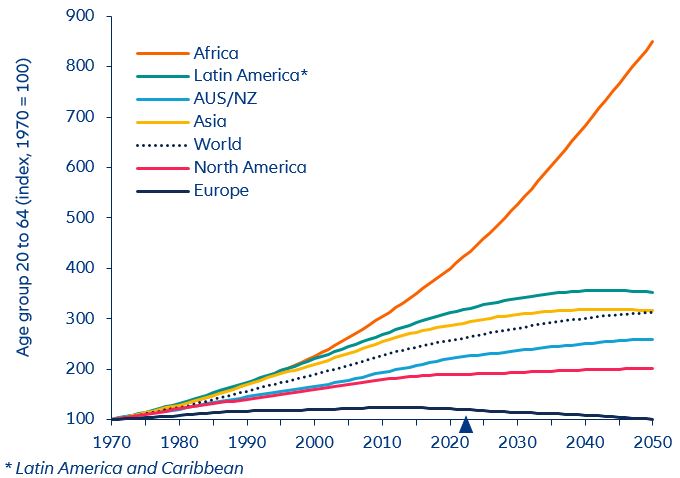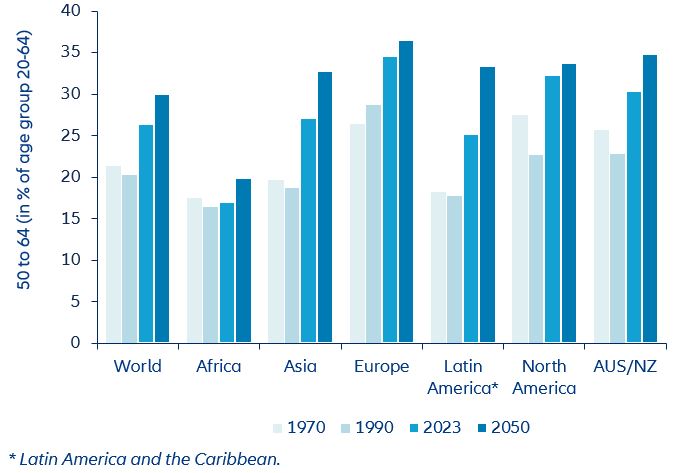EXECUTIVE SUMMARY
- Ageism is still pushing older workers out of the labor market: In the EU only 51% of the population aged between 60 to 64 is still active on the labor market. The main causes are difficulties to find an adequate job and long-term unemployment in higher ages since negative stereotypes about older workers persist.
- Demographic change amplifies the need to be more inclusive of older workers: 30% of the global workforce will be aged 50 and older by 2050. The growth of the working-age population is set to slow down in every region except Africa and turn negative in Europe. In this context, retaining older workers and providing incentives to postpone retirement will become all the more important.
- Retirement age has a marked impact on labor force participation rates in higher ages. Therefore, an important measure might be a new approach to retirement. Arbitrarily set mandatory retirement ages do not take into account developments in life expectancy or differing job requirements. In Singapore or Sweden, where older workers have the right to get re-employed or to work until the ages of 68 and 69, respectively, the labor force participation rates of older workers are markedly higher. Similar measures implemented EU wide, could add 6mn people to the workforce in 2050.
- Sustained efforts of companies are needed to adapt the labor markets to the needs of an aging workforce population. Measures to improve the age friendliness of companies include granting more flexibility with respect to working hours and place of work, fostering lifelong learning by offering training and career development opportunities to all age groups, promoting the building of age-diverse teams to foster knowledge transfer, offering health and prevention programs, designing workplaces ergonomically and training staff to fight against (unconscious) age biases.
- Government support measures play an equally important role. These include subsidies for companies that hire long-term unemployed older workers, subsidizing training programs for low-skilled and older workers or mobility grants for older workers who need to relocate. Introducing flexible retirement options that allow for a combination of pension and labor income could facilitate a flexible transition from work to retirement. National campaigns to combat ageism could support cultural change. But in the end, the success of all these measures depends also on the older workers themselves, who need to ask for lifelong learning and training possibilities, and be open to sharing their knowledge to actively refute preconceptions.
Ageism is still pushing older workers out of the labor market, hampering pension reforms
Job seekers aged 50 and older take twice as long to find new employment compared to young workers. Against the background of aging societies and increasing life expectancy, retaining older workers and providing incentives to postpone retirement are key to improving the long-term sustainability of pension systems, and cushioning the demographic impact on the labor market. In fact, many countries have already introduced measures such as granting credits for long work histories or postponing retirement and tightened the conditions for early retirement. But further increases of the retirement age are often still ruled out by politicians.
Recent protests against the increase of the retirement age in France and Uruguay as well as the strong reactions to the proposal of the opposition to abolish the possibility of retirement at the age of 63 for those insured for at least 45 years in Germany, illustrate the politically charged nature of the issue. Protests and resentment are fueled by the fear of being unable to find an adequate job at an older age and being pushed into prolonged unemployment before reaching the retirement age. And these fears are rather valid, considering that job seekers aged 50 and older take twice as long to find new employment compared to young workers. Moreover, in most countries, the share of long-term unemployment is still markedly higher in the age group 55 to 64 than in the average workforce population. In the OECD, the share has been 8.7pps higher on average than in the age group 25 to 54 since the turn of the century. In 2022, the gap reached 10.7pps after a dip to 4.5pps during the Covid-19 pandemic. 38.6% of older workers were unemployed for longer than one year compared to 28.0% of the workers in the age group 25 to 54 (Figure 1).

